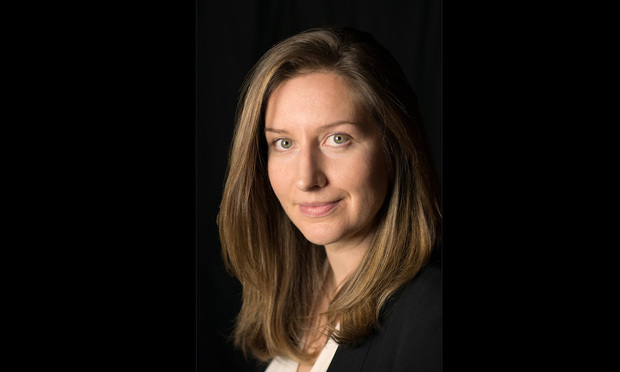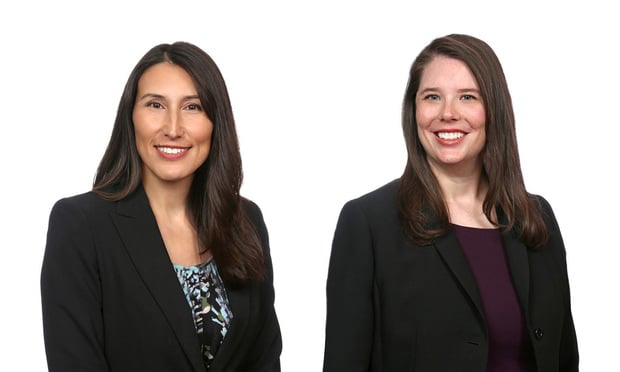On Appeals: Think Outside the Cliché
For trial lawyers who are pressed for time during motion practice, making a point by cliché might seem like the simplest and most effective way to convey their message. But using clichés in legal writing can be a risky business.
September 13, 2019 at 02:20 PM
6 minute read
 Susan Yorke, California Appellate Law Group (Photo: Courtesy Photo)
Susan Yorke, California Appellate Law Group (Photo: Courtesy Photo)
Shortcuts are tempting. Therein lies the appeal of the cliché—one familiar phrase can make a general point that might otherwise take paragraphs to explain. And while nuance may be lost, efficiency is gained. For trial lawyers who are pressed for time during motion practice, making a point by cliché might seem like the simplest and most effective way to convey their message. But using clichés in legal writing can be a risky business.
Clichés cause trouble when they are used in lieu of reasoned analysis. For example, a lawyer might describe a piece of evidence as the "smoking gun" without taking the time to explain why that evidence satisfies each and every disputed element of the claim. By using shorthand to convey that the evidence is dispositive, the lawyer fails to provide the trial court with a roadmap for granting whatever relief is sought. This means either that the trial court must come up with its own reasoned analysis to support relief—and it rarely behooves a person to make the court do extra work—or that the court will simply adopt the same shorthand the trial lawyer used to justify the result.
If the court adopts the lawyer's shorthand as its substantive reasoning, the resulting ruling may well be vulnerable on appeal. To the extent that the issue is one that requires the district court to show that it exercised its discretion in accordance with the applicable standards, a ruling premised on a folksy turn of phrase is unlikely to survive appellate scrutiny.
The U.S. Court of Appeals for the Ninth Circuit's decision in Eminence Capital v. Aspeon, 316 F.3d 1048 (2003), provides a perfect example. In that case, the defendant moved to dismiss a second amended complaint for failure to state a claim. The plaintiff argued that, even if dismissal was proper, leave to amend should be granted because the pleading deficiency could be cured by the addition of more specific allegations. The defendant, in turn, argued that dismissal with prejudice was appropriate because plaintiff had already had "three bites at the apple."
The district court adopted the defendant's shorthand. Rather than providing a reasoned analysis that walked through the factors governing amendment under Fed. R. Civ. P. 15, the district court concluded that the plaintiff was not entitled to amend because it had already had "three bites at the apple." Three bites were enough, so the district court dismissed with prejudice—an apparent win for the cliché-wielding defendant.
The victory was short-lived. The plaintiff appealed, and the Ninth Circuit reversed. In doing so, the court focused on the fact that, although granting leave to amend is a discretionary decision that usually requires deference to the ruling below, the district court must nonetheless support its decision with reasoned analysis. The "three bites at the apple" cliché fell short of that standard. The number of "bites" previously taken had little to do with the flexible, multi-factor approach required under Rule 15. And the district court's use of the cliché, if interpreted strictly, imposed an impermissible bright-line rule on the number of attempts allowed to perfect a complaint.
Judge Stephen Reinhardt wrote separately to stress the particular problems caused by the use of clichés. He explained that clichés too often "provide a substitute for reasoned analysis." When used in that manner, "they deaden our senses to the nuances of language so often critical to our common law tradition." Because our legal system depends upon a "process of adaptation and progress" achieved through application of general principles to specific facts, it "necessitates the careful exposition of prose." Thus, in trying to discern whether a result comports with the applicable statutes, rules, and case law, "the biting of apples does not help us."
Other respected legal scholars and judges tend to agree about the dangers posed by clichés. Bryan Garner advises that, "If one finds oneself writing or talking in ready-made phrases, it is time to draw back and frame the thought anew." In a conversation at Duke Law School in 2008, Judge Richard Posner of the Seventh Circuit mentioned describing a pattern of discrimination as a mosaic in one of his opinions, only to watch in dismay as a "mosaic rule" emerged from what had simply been meant as a descriptor of the evidence in that particular case. He noted that "Judges love clichés. They are always grasping at clichés." But over-reliance on clichés can result in a misunderstanding or oversimplification of the applicable legal rule.
Bad writing can also lead to bad thinking—a risk that extends beyond the sphere of legal practice. Sloppy shorthand is not only a poor substitute for rational analysis but can, as Reinhardt put it, actually "have an adverse effect on various modes of thinking, some of which are even more important to our future welfare than the legal analyses in which we engage." Quoting George Orwell, his concurrence claimed that "if one gets rid of these bad writing habits, one can think more clearly, and to think clearly is a necessary step toward political regeneration: so that the fight against bad English is not frivolous and is not the exclusive concern of professional writers."
While the consequences of using clichés in motions practice might not necessarily be Orwellian in scope, this type of shorthand can still weaken an argument, require more work for the trial court to grant the relief sought, and expose a win in the trial court to reversal on appeal. So when in doubt, skip the cliché and take the time to reason it out.
On Appeals is a monthly column by the attorneys of the California Appellate Law Group LLP, an appellate boutique with offices in San Francisco and Los Angeles. Susan Yorke is of counsel with the firm. She served as a law clerk on the U.S. Court of Appeals for the Ninth Circuit for two judges and in the Appellate Division of the Oregon Department of Justice. Find out more about Yorke and the the firm at www.calapplaw.com.
This content has been archived. It is available through our partners, LexisNexis® and Bloomberg Law.
To view this content, please continue to their sites.
Not a Lexis Subscriber?
Subscribe Now
Not a Bloomberg Law Subscriber?
Subscribe Now
NOT FOR REPRINT
© 2025 ALM Global, LLC, All Rights Reserved. Request academic re-use from www.copyright.com. All other uses, submit a request to [email protected]. For more information visit Asset & Logo Licensing.
You Might Like
View All



Trending Stories
- 1SDNY US Attorney Damian Williams Lands at Paul Weiss
- 2Litigators of the Week: A Knockout Blow to Latest FCC Net Neutrality Rules After ‘Loper Bright’
- 3Litigator of the Week Runners-Up and Shout-Outs
- 4Norton Rose Sues South Africa Government Over Ethnicity Score System
- 5KMPG Wants to Provide Legal Services in the US. Now All Eyes Are on Their Big Four Peers
Who Got The Work
Michael G. Bongiorno, Andrew Scott Dulberg and Elizabeth E. Driscoll from Wilmer Cutler Pickering Hale and Dorr have stepped in to represent Symbotic Inc., an A.I.-enabled technology platform that focuses on increasing supply chain efficiency, and other defendants in a pending shareholder derivative lawsuit. The case, filed Oct. 2 in Massachusetts District Court by the Brown Law Firm on behalf of Stephen Austen, accuses certain officers and directors of misleading investors in regard to Symbotic's potential for margin growth by failing to disclose that the company was not equipped to timely deploy its systems or manage expenses through project delays. The case, assigned to U.S. District Judge Nathaniel M. Gorton, is 1:24-cv-12522, Austen v. Cohen et al.
Who Got The Work
Edmund Polubinski and Marie Killmond of Davis Polk & Wardwell have entered appearances for data platform software development company MongoDB and other defendants in a pending shareholder derivative lawsuit. The action, filed Oct. 7 in New York Southern District Court by the Brown Law Firm, accuses the company's directors and/or officers of falsely expressing confidence in the company’s restructuring of its sales incentive plan and downplaying the severity of decreases in its upfront commitments. The case is 1:24-cv-07594, Roy v. Ittycheria et al.
Who Got The Work
Amy O. Bruchs and Kurt F. Ellison of Michael Best & Friedrich have entered appearances for Epic Systems Corp. in a pending employment discrimination lawsuit. The suit was filed Sept. 7 in Wisconsin Western District Court by Levine Eisberner LLC and Siri & Glimstad on behalf of a project manager who claims that he was wrongfully terminated after applying for a religious exemption to the defendant's COVID-19 vaccine mandate. The case, assigned to U.S. Magistrate Judge Anita Marie Boor, is 3:24-cv-00630, Secker, Nathan v. Epic Systems Corporation.
Who Got The Work
David X. Sullivan, Thomas J. Finn and Gregory A. Hall from McCarter & English have entered appearances for Sunrun Installation Services in a pending civil rights lawsuit. The complaint was filed Sept. 4 in Connecticut District Court by attorney Robert M. Berke on behalf of former employee George Edward Steins, who was arrested and charged with employing an unregistered home improvement salesperson. The complaint alleges that had Sunrun informed the Connecticut Department of Consumer Protection that the plaintiff's employment had ended in 2017 and that he no longer held Sunrun's home improvement contractor license, he would not have been hit with charges, which were dismissed in May 2024. The case, assigned to U.S. District Judge Jeffrey A. Meyer, is 3:24-cv-01423, Steins v. Sunrun, Inc. et al.
Who Got The Work
Greenberg Traurig shareholder Joshua L. Raskin has entered an appearance for boohoo.com UK Ltd. in a pending patent infringement lawsuit. The suit, filed Sept. 3 in Texas Eastern District Court by Rozier Hardt McDonough on behalf of Alto Dynamics, asserts five patents related to an online shopping platform. The case, assigned to U.S. District Judge Rodney Gilstrap, is 2:24-cv-00719, Alto Dynamics, LLC v. boohoo.com UK Limited.
Featured Firms
Law Offices of Gary Martin Hays & Associates, P.C.
(470) 294-1674
Law Offices of Mark E. Salomone
(857) 444-6468
Smith & Hassler
(713) 739-1250






